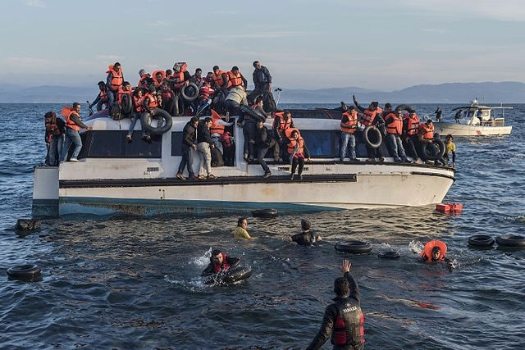
June 19, 2017; Al Jazeera
With all of the turmoil in America’s capital, it can be easy to forget about the issues plaguing the rest of the world. But, during today’s World Refugee Day, advocates here and abroad drew attention to the international refugee crisis. Unfortunately, the massive scale of the problem defies quick solutions and requires non-developing countries to step up with more financial and diplomatic support, not to mention a commitment to resettlement.
The number of people forcibly displaced from their homes by conflict or persecution increased by 300,000 to 65.6 million from 2015 to 2016, according to a new report from the United Nations High Commissioner for Refugees (UNHCR). Fifty-one percent are children, including 75,000 young people traveling alone. (This fascinating Fast Company visualization illustrates the flow of refugees around the world from 2000 to 2015.)
Other worrisome trends include a rise in refugees fleeing the civil war in South Sudan:
South Sudan’s civil war, which began in December 2013, has left tens of thousands dead and forced a total of 3.7 million people from their homes—nearly a third of the population.
Overall, the refugee population from the world’s youngest country swelled 85 percent last year to reach 1.4 million by the end of 2016, the UNHCR report showed.
But, with the conflict in Syria unrelenting, Syrians still make up the largest portion of refugees. The report notes that 55 percent of refugees come from just three countries: Syria, Afghanistan, and South Sudan.
Sign up for our free newsletters
Subscribe to NPQ's newsletters to have our top stories delivered directly to your inbox.
By signing up, you agree to our privacy policy and terms of use, and to receive messages from NPQ and our partners.
NPQ has reported extensively on the international refugee crisis and internally displaced people and how nonprofit organizations are playing a role. Outcomes have been mixed, especially when complex relief efforts need to be coordinated across cultures and borders. A recent report even showed that NGO anti-smuggling efforts actually worsened the situation for migrants trying to cross the Mediterranean.
In fact, 84 percent of refugees are hosted in the world’s developing regions: Turkey, Pakistan, Lebanon, Iran, Uganda, and Ethiopia are the top hosts, respectively. It speaks volumes that no countries in the Western world appear on that list, particularly when nationalism is on the rise.
Here in the U.S., President Donald Trump issued an executive order temporarily blocking travel from seven (later changed to six) majority-Muslim countries, which has repeatedly been blocked by various courts as discriminatory and is now headed to the U.S. Supreme Court. The order and four-month hiatus on accepting new refugees devastated the network of refugee resettlement agencies, where hundreds of jobs have been cut since the President’s executive order. They had expected to receive 110,000 refugees this year.
There is some good news: Statistics show that refugees can help the economies where they’re resettled. And, some American companies, including Airbnb and Chobani, are increasingly stepping up as advocates for refugees and immigrants, perhaps thanks to nonprofit initiatives like Welcoming America. The country’s newest Americans have even made their voices heard as leaders of their communities over the past decade.
However, charitable dollars haven’t necessarily followed, although Giving USA’s 2016 report showed increases for international affairs organizations, among others, as immigration issues took center stage in public and political discourse pre and post-election.
Without national governments and donors putting resources behind resettlement, and with conflicts growing in new regions, it’s unlikely the world will see a decline in refugee populations anytime soon.—Anna Berry












